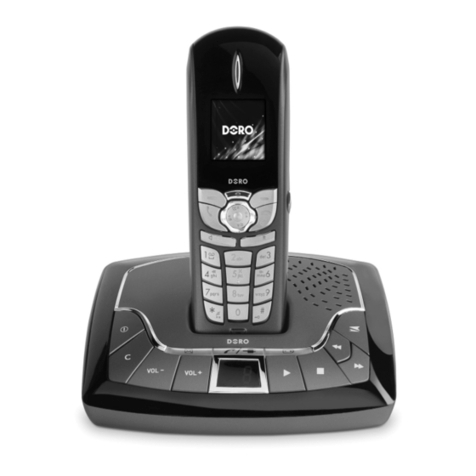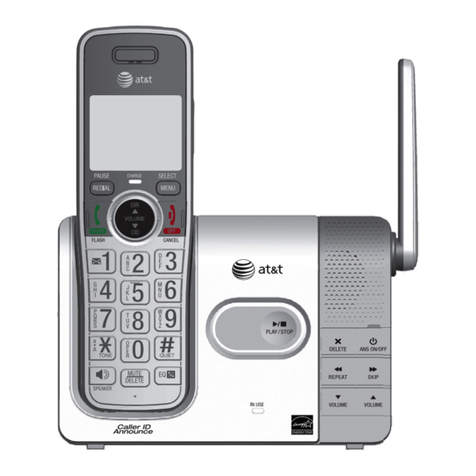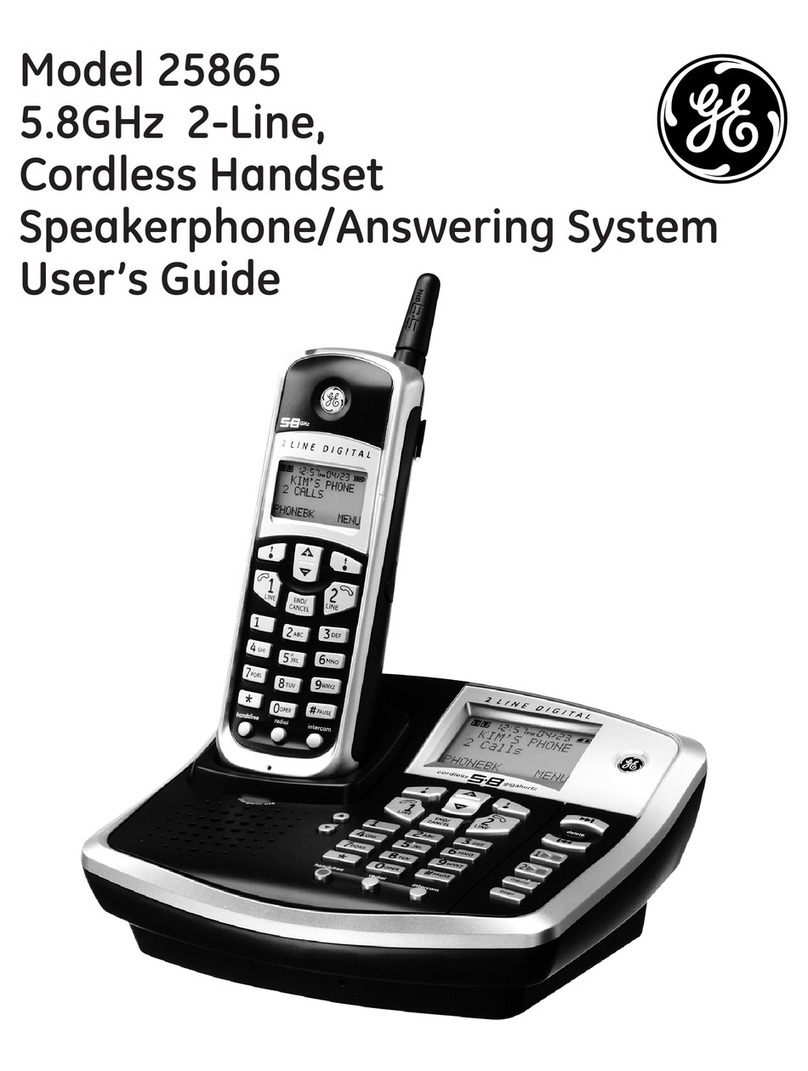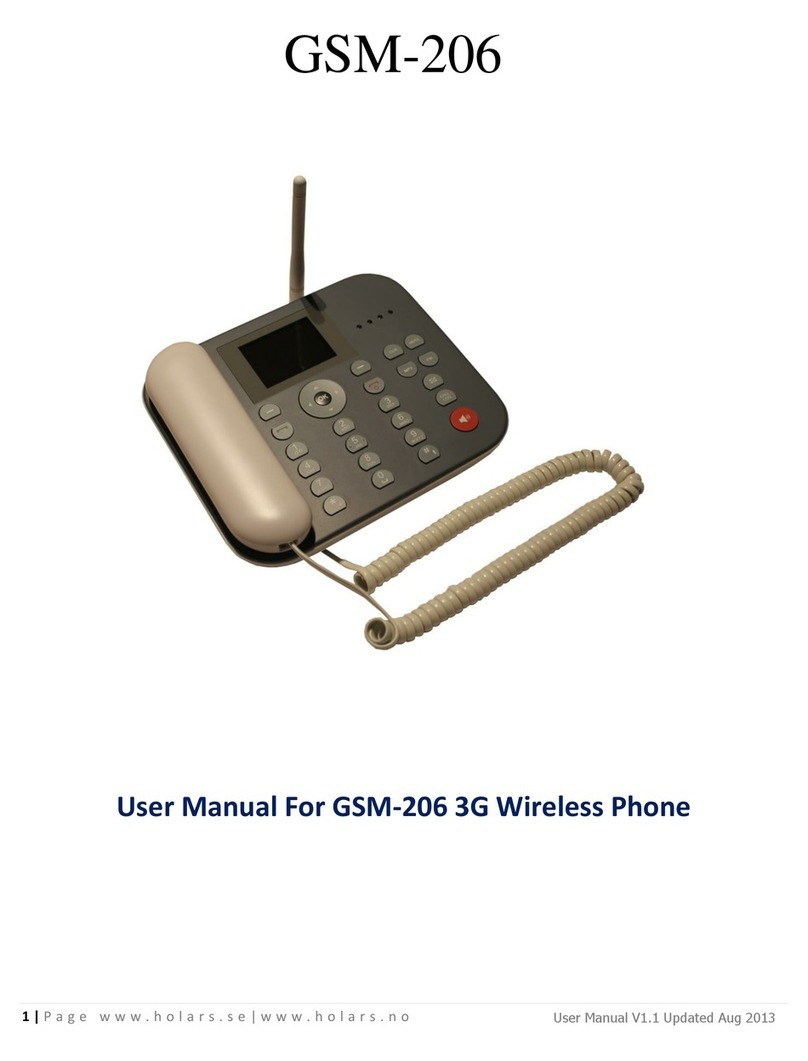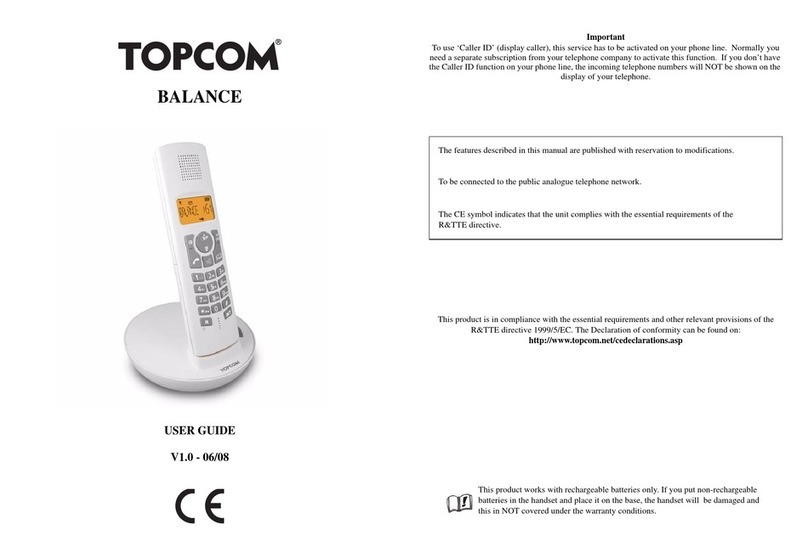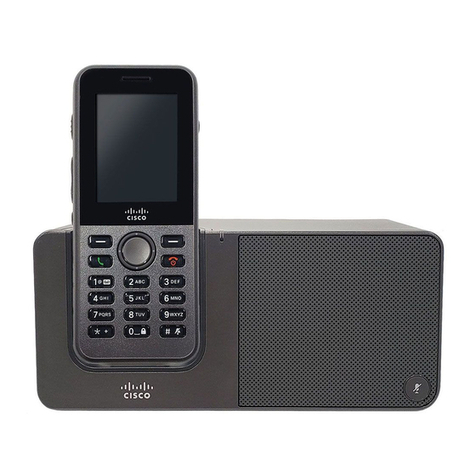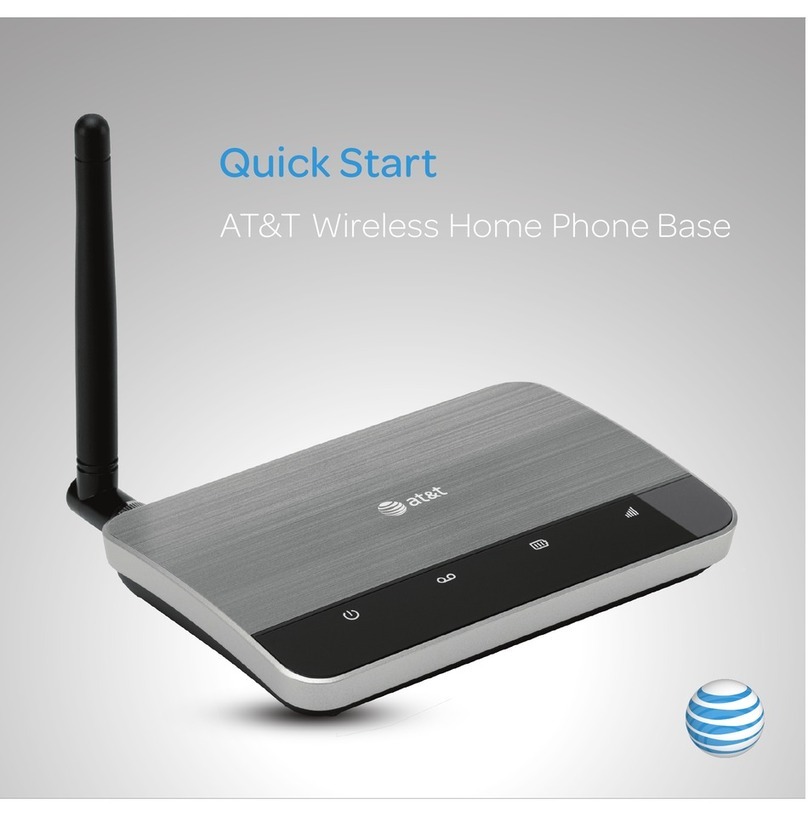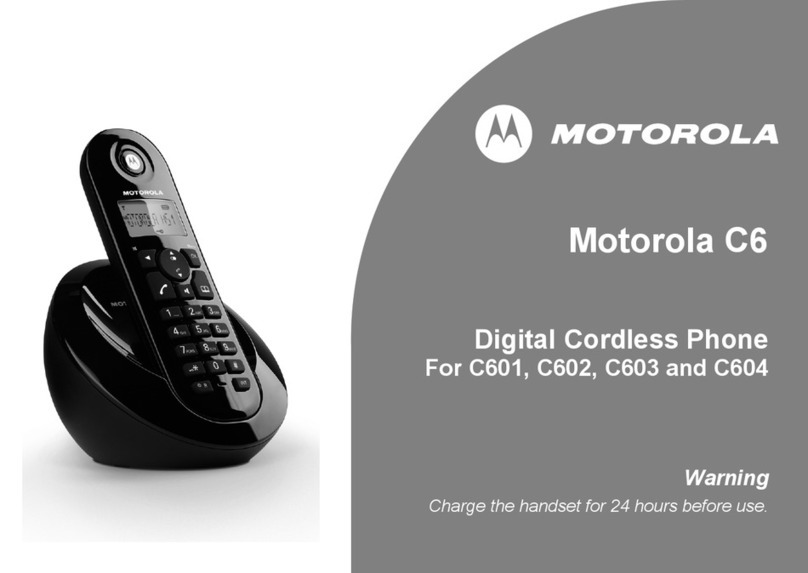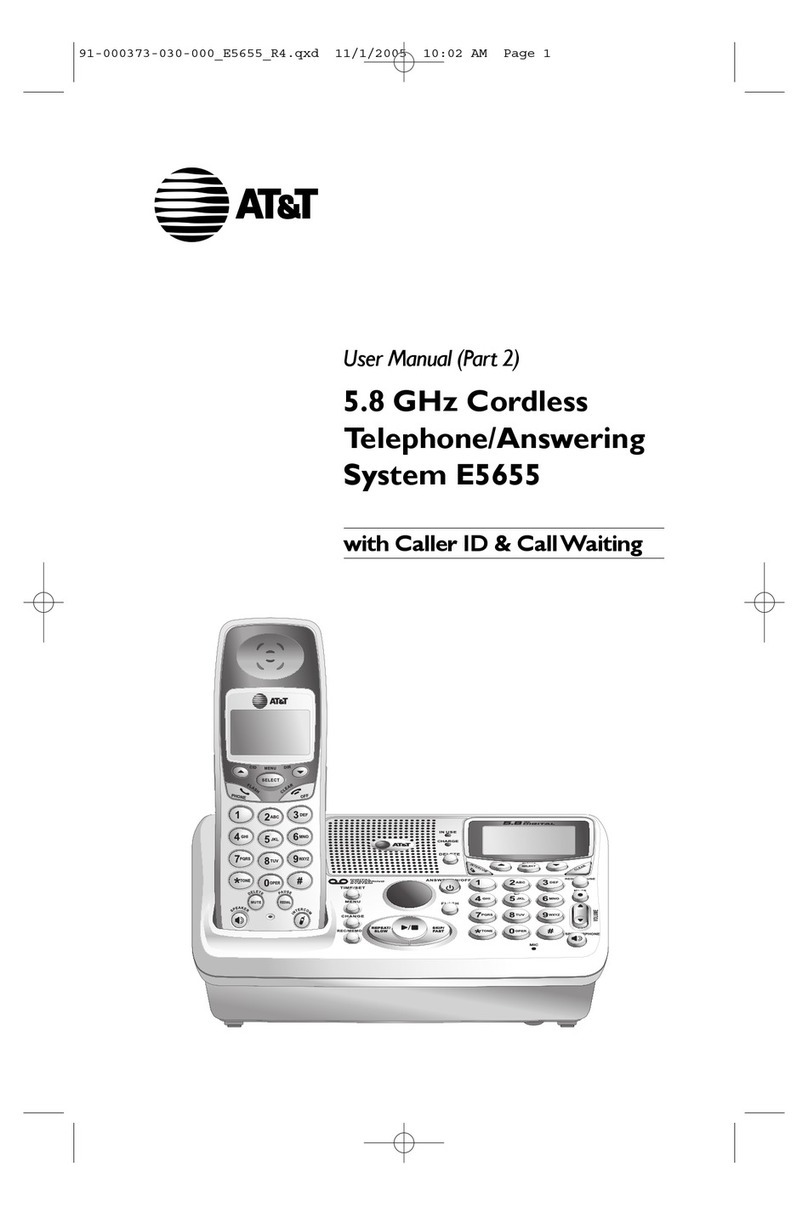TrendCommunications AuroraPlus User manual

Form 080/01
Complimentary Reference Material
This PDF has been made available as a complimentary service for you to assist in
evaluating this model for your testing requirements.
T G offers a wide range of test equipment solutions, from renting short to long
term, buying refurbished and purchasing new. Financing options, such as
Financial Rental, and Leasing are also available on application.
T G will assist if you are unsure whether this model will suit your requirements.
Call T G if you need to organise repair and/or calibrate your unit.
If you click on the “Click-to-Call” logo below, you can all us for FREE!
TMG Corporate Website TMG Products Website
Disclaimer:
All trademarks appearing within this PDF are trademarks of their respective owners.


429850
Issue 5 - 04/01
User Guide
Trend AuroraPlus
Cover.p65 30/04/01, 16:211

Trend AuroraPlus User Guide
429850
Cover.p65 30/04/01, 16:212

Issue 5 - 04/01 i
Copyright Notice
The information contained in this document is the property
of Trend Communications Ltd. and is supplied without
liability for errors and omissions.
No part of this document may be reproduced or used except
as authorised by contract or other written permission from
Trend Communications Ltd. The copyright and all
restrictions on reproduction and use apply to all media in
which this information may be placed.
Trend Communications Ltd. pursue a policy of continual
product improvement and reserve the right to alter without
notice the specification, design, price or conditions of supply
of any product or service.
The Trend Aurora name is a registered trademark of Trend
Communications Limited.
Windows is the registered trademark of Microsoft
Corporation.
© Trend Communications Ltd. 2001
All rights reserved
Publication ref: 429850
Issue 5 - 04/01
Trend Communications Ltd.
Knaves Beech Estate
Loudwater
High Wycombe
Buckinghamshire
HP10 9QZ
U.K.
TEL: +44 (0) 1628 524977
FAX: + 44 (0) 1628 810094
email: [email protected]
Copyrite.P65 30/04/01, 16:221

Trend AuroraPlus User Guide
ii 429850
International Contact Addresses
Trend Communications S.A.
Burospace - Bât 7
Route de Gisy
91571 BIEVRES CEDEX
FRANCE
TEL: + 33 1 69 35 54 70
FAX: + 33 1 60 19 00 48
Trend CommunicationsGmbH
Valerystr. 1
85716 Unterschleißheim b. München
GERMANY
TEL: + 49 89 32 30 09 (0)
FAX: + 49 89 32 30 09-99
Trend Communications SRL.
v. Cavriana 3
20134 Milano
ITALY
TEL: + 39 02 7391.414
FAX: + 39 02 7391.309
Trend Communications s.l.
Pujades 60
08005 Barcelona
SPAIN
TEL: + 34 93 300 3313
FAX: + 34 93 309 2385
Copyrite.P65 30/04/01, 16:222

Issue 5 - 04/01 iii
Trend Communications
C-207 Twin Arcade
Military Road
Marol Andheri (East)
Mumbai 400059
INDIA
TEL: + 91 228 597463
FAX: + 91 228 596155
Help Desk Numbers
If you have any queries about the operation of
AuroraPlus, you can contact the Trend Communi-
cations Ltd. Help Desk:
From within the UK: 08457 660 854 (local rate)
From France: (1) 69 35 54 75
From Germany: (0) 89-32 30 09-44
From other non-UK countries: +44 1628 851085
For sales enquiries, talk to your local Trend
Communications representative.
Web Site Information
www.trendcomms.com
Copyrite.P65 30/04/01, 16:223

Trend AuroraPlus User Guide
iv 429850
Copyrite.P65 30/04/01, 16:224

Issue 5 - 04/01 v
Contents
Contents
Introducing AuroraPlus ............................................. 1-1
Welcome ! ........................................................................ 1-1
Conventions in the Guide .................................................. 1-2
Your AuroraPlus ................................................................ 1-4
Types of AuroraPlus........................................................... 1-4
Features ............................................................................. 1-4
Use ................................................................................... 1-7
Supplied with AuroraPlus ................................................. 1-8
Looking after AuroraPlus .................................................. 1-8
Safety Advice ................................................................... 1-8
Where to get more information ........................................ 1-9
ISDN Explained .............................................................. 1-10
What is the ISDN? ............................................................ 1-10
ISDN Services .................................................................. 1-10
Equipment on the ISDN ................................................... 1-11
ISDN Interfaces ................................................................ 1-11
ISDN Standards ............................................................... 1-12
Pulse Code Modulation ................................................... 1-12
Methods of Voice Encoding ............................................. 1-12
Line Coding Techniques ................................................. 1-13
Basic Rate & Primary Rate ISDN ..................................... 1-13
The OSI 7-Layer Model .................................................... 1-15
Layer 1 (BRI) .................................................................... 1-16
Layer 2 .............................................................................. 1-17
Layer 3 .............................................................................. 1-17
Protocols .......................................................................... 1-18
Getting Started .......................................................... 2-1
A Look at AuroraPlus ....................................................... 2-2
The Keypad ...................................................................... 2-3
Switches ........................................................................... 2-4
S/U Change-Over Switch .................................................. 2-4
POTS Check Switch (Only via U Access Cable) .............. 2-5
Battery Charging Switch (Optional) .................................. 2-6
Termination Resistor Switch (TERM) ................................ 2-6
Interface Switch (Optional) ................................................ 2-7
Communication Ports & Connectors ................................ 2-8
Connecting AuroraPlus ..................................................... 2-9
Switching Power On ....................................................... 2-11
TOC.p65 30/04/01, 16:255

Trend AuroraPlus User Guide
vi 429850
Displaying the Main Menu .............................................. 2-12
Scrolling through Menu Pages ....................................... 2-12
Selecting Menu Options ................................................. 2-13
Exiting from a Menu ......................................................... 2-14
Returning to the Main Menu ............................................ 2-14
Using Hot Keys .............................................................. 2-14
Setting Up your AuroraPlus ....................................... 3-1
Displaying the Setup menus ............................................ 3-1
Selecting Protocol & Line Type........................................ 3-1
Changing the Protocol ....................................................... 3-2
Changing the Line Type .................................................... 3-2
Setting up a Loop ............................................................ 3-3
Changing the Loop Options .............................................. 3-4
Call Screening .................................................................. 3-5
Address Setup: Setting CPN Sub-address & CLI ............. 3-6
Address Setup: Setting CLI Presentation/Restriction ....... 3-7
Setting up a CUG (Closed User Group) .................. 3-9
Setting the BER Test Length .......................................... 3-10
Tracer Setup ................................................................... 3-12
Entering the Date and Time............................................ 3-13
Storing Speed Dialling Numbers .................................... 3-14
Changing the Language ................................................. 3-15
Loudspeaker Volume Settings ....................................... 3-16
Default Settings .............................................................. 3-17
Call Establishment ..................................................... 4-1
Making a Call ................................................................... 4-1
Dialling ............................................................................... 4-1
DTMF tones ........................................................................ 4-4
Clearing a Call ................................................................... 4-5
Speed Dialling ................................................................... 4-6
Call Redial .......................................................................... 4-6
Answering Incoming Calls ................................................ 4-7
Call Waiting ...................................................................... 4-8
Dealing with a Second Call ............................................... 4-8
Placing a Call on Hold ..................................................... 4-9
Making an Outgoing Call During an Existing Call ............ 4-9
Accepting an Incoming Call During an Existing Call ..... 4-11
Selecting an ISDN Service .............................................. 4-12
TOC.p65 30/04/01, 16:256

Issue 5 - 04/01 vii
Contents
Setting up a User-Defined Bearer Service ...... 4-14
Entering Hexadecimal Numbers ..................................... 4-15
Setting the Bearer Capability ................................. 4-16
Setting the Low Layer Capability ........................... 4-16
Setting the High Layer Capability .......................... 4-17
Setting the Bearer Service ..................................... 4-17
Channel Setup ................................................................ 4-18
Supplementary Service Selection................................... 4-20
Call Forwarding ................................................... 4-20
Call Deflection .................................................................. 4-29
Keypad Facility ....................................................... 4-30
Malicious Call Identification (MCID) ................................ 4-36
Making a Three Party Call ............................................... 4-37
Setting up CCBS
VN
(Completion of Calls to Busy Subscribers) ................. 4-40
Making a Call with CCBS Enabled ................................. 4-41
CCBS Error Messages .................................................... 4-44
CCBS Options Not Supported by AuroraPlus. ............... 4-44
Suspending and Resuming a Call ........................ 4-44
User-to-User Signalling ......................................... 4-46
Setting up User-to-user Signalling .................................. 4-46
Sending an INVOKE Request .......................................... 4-50
Choosing how AuroraPlus Responds to
UUS INVOKE Requests................................................ 4-52
Test Functions ............................................................ 5-1
Autotest ............................................................................ 5-1
Setting up the Autotest ....................................................... 5-1
Running the Autotest ......................................................... 5-2
Checking the Line Configuration ...................................... 5-3
Automatically configuring the line under test ................... 5-4
Service Check: Determining Available Services................ 5-4
Performing a Local Service Check .................................... 5-5
Performing a Remote Service Check ................................ 5-6
Understanding Service Check Results ............................. 5-6
The X.25 Test .................................................................... 5-7
Testing Fixed Links ........................................................... 5-8
Performing a BER Test ..................................................... 5-8
TOC.p65 30/04/01, 16:257

Trend AuroraPlus User Guide
viii 429850
Downloading BERT Results to a PC ................................. 5-9
Starting a BER test ........................................................... 5-10
Understanding the BER Test Results .............................. 5-13
Displaying Test Results ................................................... 5-15
Displaying Tracer Output ................................................. 5-16
Downloading Tracer Results to a PC .............................. 5-17
Clearing Tracer from Memory.......................................... 5-18
Saving Results ................................................................ 5-19
Saving a Set of Results .................................................... 5-19
Displaying Results You Have Saved ............................... 5-20
Sending Results to a PC ................................................ 5-20
Entering the Customer and Operator Names ................. 5-20
Sending the Report .......................................................... 5-21
Self Test Functions ......................................................... 5-22
Performing a Self Test Function ...................................... 5-23
Upgrading AuroraPlus Software ..................................... 5-26
Performing a Status Check ............................................. 5-29
Checking Call Forwarding Status .......................... 5-29
Checking Call Forwarding Status
VN
.......................... 5-31
Checking Active Facilities ...................................... 5-31
Displaying Far End Block Errors/Near End Block Errors
(FEBE/NEBE) .............................................................. 5-33
Checking AuroraPlus's Status and the Line Voltage ....... 5-34
X.25 Calls ................................................................... 6-1
What is D-channel X.25 ? ................................................. 6-1
Setting up an X.25 call ..................................................... 6-1
Connecting a X.25 Call .................................................... 6-8
Receiving X.25 Calls ........................................................ 6-12
Spectrum B Stimulus and Functional (Optional) . 7-1
Introduction ...................................................................... 7-1
SPIDS (Service Profile Identifier) ...................................... 7-1
Spectrum B Functional .................................................... 7-1
Bearer and teleservices .................................................... 7-1
Supplementary Services ................................................... 7-2
Spectrum B Stimulus and Functional ............................... 7-2
Main Menu ......................................................................... 7-2
Changing the SPID (Service Profile Identifier) ................. 7-3
Spectrum Stimulus Call Setup .......................................... 7-5
Performing a BER test ....................................................... 7-6
Viewing messages sent by the network ............................ 7-7
TOC.p65 30/04/01, 16:268

Issue 5 - 04/01 ix
Contents
Testing on Analogue Lines with
AuroraPlus (Optional) ............................................... 8-1
Preparing AuroraPlus for Analogue Lines ......................... 8-1
Analogue Setup................................................................ 8-2
Setting the Dial Mode ........................................................ 8-2
Storing Speed Dial Numbers ............................................ 8-2
Setting Language & Loudspeaker Options ....................... 8-3
Answering Incoming Calls ................................................ 8-3
Making Outgoing Calls .................................................... 8-4
Overlap Dialling ................................................................. 8-4
En Bloc Dialling .................................................................. 8-5
Speed Dialling ................................................................... 8-6
While a call is connected ................................................. 8-6
Switching between Pulse and DTMF dialling ................... 8-7
Putting a call on hold ......................................................... 8-8
Displaying the Meter Pulse Count .................................... 8-9
The 40kHz Generation Test ............................................. 8-10
Technical Data ..........................................................A1-1
Glossary and Acronyms ..........................................A2-1
Menutrees ...............................................................A3-1
Call Clearing Cause Codes .....................................A4-1
Index
TOC.p65 30/04/01, 16:269

Trend AuroraPlus User Guide
x 429850
TOC.p65 30/04/01, 16:2610

Introducing AuroraPlus
Issue 5 - 04/01 1-1
Introducing AuroraPlus
This chapter introduces you to the documentation provided
with AuroraPlus and the conventions used throughout it. It
also outlines the main features of AuroraPlus and provides an
introduction to ISDN.
Welcome !
Welcome to the Trend AuroraPlus
User Guide. This guide
contains information on using your AuroraPlus together with
safety information, technical details and an introduction to
ISDN. If you are a new user you may find it helpful to spend
time familiarising yourself with this guide so that you know
where to find information when you need it. The structure
of the guide is as follows :
Chapter 1 (this chapter) introduces you to AuroraPlus and to
ISDN.
Chapter 2 describes the controls, switches, connectors and
power supply. Also discussed is how to display, select from
and navigate through the menu structure.
Chapter 3 tells you how to set up AuroraPlus
in preparation
for testing.
Chapter 4 describes how to accept and make voice and data
calls.
Chapter 5 describes how to perform various test functions
with your AuroraPlus - for example a BER Test or a Service
Check.
Chapter 6 describes how to use AuroraPlus to test in X.25
generic packet mode.
1
Chap01.P65 30/04/01, 16:261

Trend AuroraPlus User Guide
1-2 429850
Chapter 7 describes how to use AuroraPlus to test on a
network using Spectrum B Functional or Spectrum B
Stimulus.
Chapter 8 describes how to use AuroraPlus to test on analogue
lines.
Appendix 1 lists technical information relevant to your
AuroraPlus.
Appendix 2 provides a glossary of terms and abbreviations
used throughout this Guide.
Appendix 3 contains menutree diagrams to help you navigate
through the menu structure.
Appendix 4 explains the Cause Code and clearing location
information provided by AuroraPlus.
Conventions in the Guide
The conventions used throughout this Guide are explained
below:
Protocol Symbols
Differences between the public protocols supported by
AuroraPlus (ETSI, 1TR6, TPH and VN) are indicated
throughout this guide using symbols. For example, text that
applies to VN only is indicated using:
VN
Text that does not apply to VN is indicated by a line through
the symbol :
VN
Unlabelled text applies to all protocols.
Chap01.P65 30/04/01, 16:262

Introducing AuroraPlus
Issue 5 - 04/01 1-3
Special Typefaces
To help you distinguish them, menu options are shown in a
different typeface - for example ‘choose SETUP’.
The names of keys are displayed in bold, italic typeface - for
example ‘press ENTER’.
Other Symbols
Tip Indicates a useful tip.
Note This symbol is used to draw your
attention to important notes.
Hot Keys Indicates the Hot Key combination
to access the function quickly.
Warning This symbol highlights warnings or
cautionary notes.
Notes
•ETSI is used to denote the Euro ISDN protocol
throughout this manual.
•The text and illustrations in this User Guide describe a
typical AuroraPlus. They may not match your specific
configuration and may include features that you did
not purchase.
•The text and illustrations in this User Guide describe all
the features available on AuroraPlus. You may not be
able to select certain menu items if your organisation
did not purchase these options.
•The term reference point and interface (R, S, T, S/T or
U) are used interchangeably.
•The term ‘S bus’refers to an ‘S’Point-to-Multipoint
connection, while S usually refers to a Point-to-Point
connection known as the ‘T’reference point.
•The term ‘POTS’(Plain Old Telephone System) is used
to refer to the service that is also known as PSTN or
analogue telephony.
Chap01.P65 30/04/01, 16:263

Trend AuroraPlus User Guide
1-4 429850
Your AuroraPlus
AuroraPlus is an easy-to-use, hand-held Basic Rate ISDN
tester. It enables various types of ISDN calls and connections
to be tested and its menu-driven display allows easy
operation and programming. AuroraPlus contains many of the
features associated with a modern ISDN telephone and
optionally a standard analogue telephone. AuroraPlus can also
perform audio monitoring on an analogue telephone line.
Types of AuroraPlus
Various types of AuroraPlus unit are available. There are three
basic types, classed according to region of operation and the
type of line coding in use on the ISDN ‘U’interface:
•non-US 2B1Q unit
•US 2B1Q unit
•4B3T unit
Within these basic types there are other options related to
the power source for the unit:
•Line powered unit - power is taken from the line.
•Battery powered unit - you can power the unit from a
battery, the optional charger or the ISDN line.
Available with all basic unit types.
•‘Combi’unit - a battery powered unit which can also
be used to test analogue telephony. Available with all
basic unit types.
Features
•4 x 12 line character, backlit display providing an easy-
to-navigate, intuitive menu structure.
•Easy-to-use keypad providing:
- ‘Hot Keys’for direct access to functions
- Direct DTMF support with * and #
Chap01.P65 30/04/01, 16:264

Introducing AuroraPlus
Issue 5 - 04/01 1-5
•Operation on U (2B1Q or 4B3T) and S/T interfaces.
•Protocols: ETSI (Euro ISDN) 1TR6 and VN.
•Support for both Point-to-Point operation (‘T’
reference point) and Point-to-Multipoint (S-bus)
operation.
•Call state and layer state information.
•Supplementary Service Support including:
- Call Hold and Retrieve
- Call Forwarding
- Call Waiting
- 3 Party Conference Call Facility
- CCBS
- Call Deflection
- Terminal portability
- User to User Signalling
•Support for bearer and teleservices:
TPH ETSI & 1TR6 VN
Tele-ISDN Tele-ISDN Tele-ISDN
3.1k Audio 3.1k Audio 3.1 Audio
Telefax Group 3 Data 64 kbit/s Telefax Group 3
Telefax Group 4 Telefax Group 3 Telefax Group 4
Data 64 kbit/s Telefax Group 4 Data 64 kbit/s
Teletex 64 Speech Teletex 64
Telex Data 56 kbits/s Telex
Mixed Mode Teletext 64 Speech
SVideo X21UC4 7k Audio
PVideo X25UC8 7k Telephony
Videotext BTX Data 56 kbit/s
OSI BTX New Mixed Mode
Timelink Audiovisual Video
tele-check Mixed Mode Videotex Syntax
Audiovisual Remote Control Videotex Int'l
tele-check GRPTEL OSI
User defined X.25 D channel tele-check
Speech tele-check Video phone
X.25 D channel User-defined MSGPRO
X.25 D channel
User-defined
Chap01.P65 30/04/01, 16:265

Trend AuroraPlus User Guide
1-6 429850
•Storage of up to 99 lines of D channel protocol
data which can be reviewed on-screen or
downloaded.
•Serial Port
- to flash EPROMs for software upgrade
- to output stored data
•BER Testing with a range of duration times
•X.25 Testing
•Facility for checking services available from the
exchange and the acceptance of calls at ‘R’, ‘S’, ‘T’and
‘U’reference points over the Basic Rate ISDN
•Audio monitoring function on a two-wire interface
•Self Testing
•Call Redial
•5 ‘Speed Dial’number entries
•Setting of Multi-Subscriber Number (MSN) in the ETSI
protocol
•Testing of voiceband and data calls
•Displays A-subscriber numbers (Calling Line Identity)
during calls
•Display of line voltage on analogue (POTS), U and S
connections
•Display of number while dialling
•Power feed from U or S/PS1 normal or restricted mode
•Unit protection via a short-circuit of direct supply
voltage
•Voltage resistant up to 240V DC on the U Interface
•Ringer. An incoming call is signalled via the built-in
ringer.
•Retention of all programmed data in nonvolatile
memory after the tester is disconnected from the
network or switched off.
Chap01.P65 30/04/01, 16:266
Table of contents
Popular Cordless Telephone manuals by other brands

Motorola
Motorola MOTOKRZR K1 GSM Motomanual
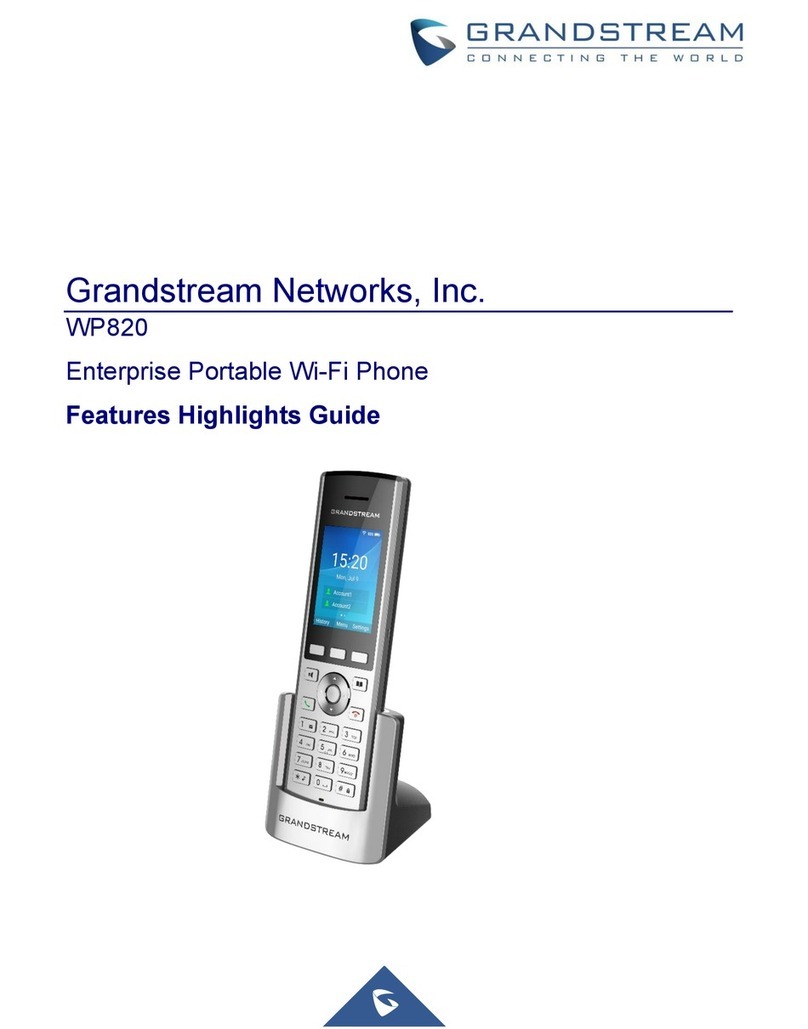
Grandstream Networks
Grandstream Networks WP820 Features Highlights Guide

Panasonic
Panasonic KX-TG6072C operating instructions

Amplicomms
Amplicomms PowerTel 1780 user guide

Panasonic
Panasonic KX-TG1611AL operating instructions
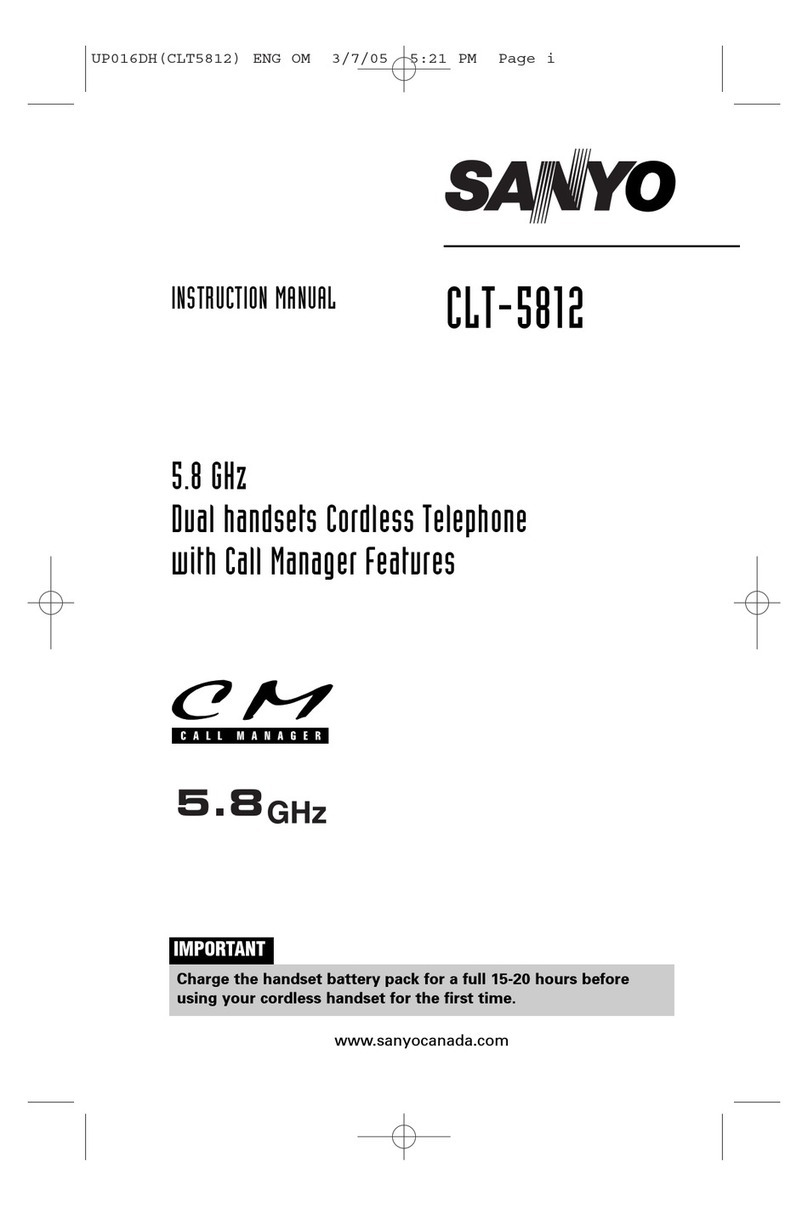
Sanyo
Sanyo CLT-5812 instruction manual
